When researching the birds of Panama and birding Panama, I discovered that one of the best spots in the country was Pipeline Road in Soberania National Park. This road is adjacent to the Panama Canal. The U.S. built it along the Panama Canal in case the canal was attacked by Germans or the Japanese during World War II. This way, they could continue to move supplies overland. The U.S. no longer controls the canal nor do they control Pipeline Road. The road has now been taken over by the jungle and the birds, mammals, and the army ant swarm that live within it.
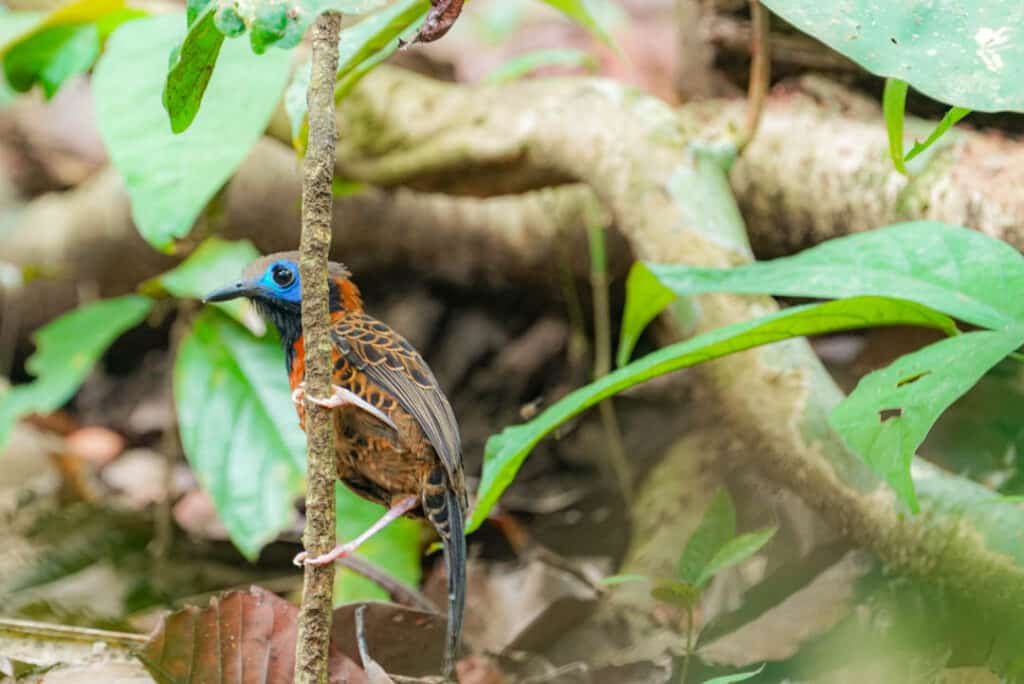
An ocellated antbird following the army ant swarm.
Birding Pipeline Road with Whitehawk Birding
My plan was to bird on my own in Metropolitan Nature Park in Panama City, then come to Gamboa and stay at the Gamboa Rainforest Resort. This would get me tantalizingly close to Pipeline Road. I chose a day tour with Whitehawk Birding. I was picked up by Michael at the resort at 5:30 a.m. We began our tour at Ammo Pond. After that, we worked the first couple of kilometers of Pipeline Road. The stretch we birded was a gravel road. About two kilometers from Gamboa, the road becomes a gravel trail, and that is as far as a car can go.
Related: Birding Antigua Guatemala at El Finca Pilar

The view from Gamboa Rainforest Resort.
Army ant swarm birds was the highlight of the Whitehawk Birding Tour
The success of a guided birding tour is whether the guide can put you onto birds that you would probably not see yourself. Following this metric, the tour was definitely a success. Michael spotted many birds that I would not have seen, and of course he knew the places to look. The highest level of skill was his knowledge of how to find an army ant swarm, and the birds that follow this phenomenon.
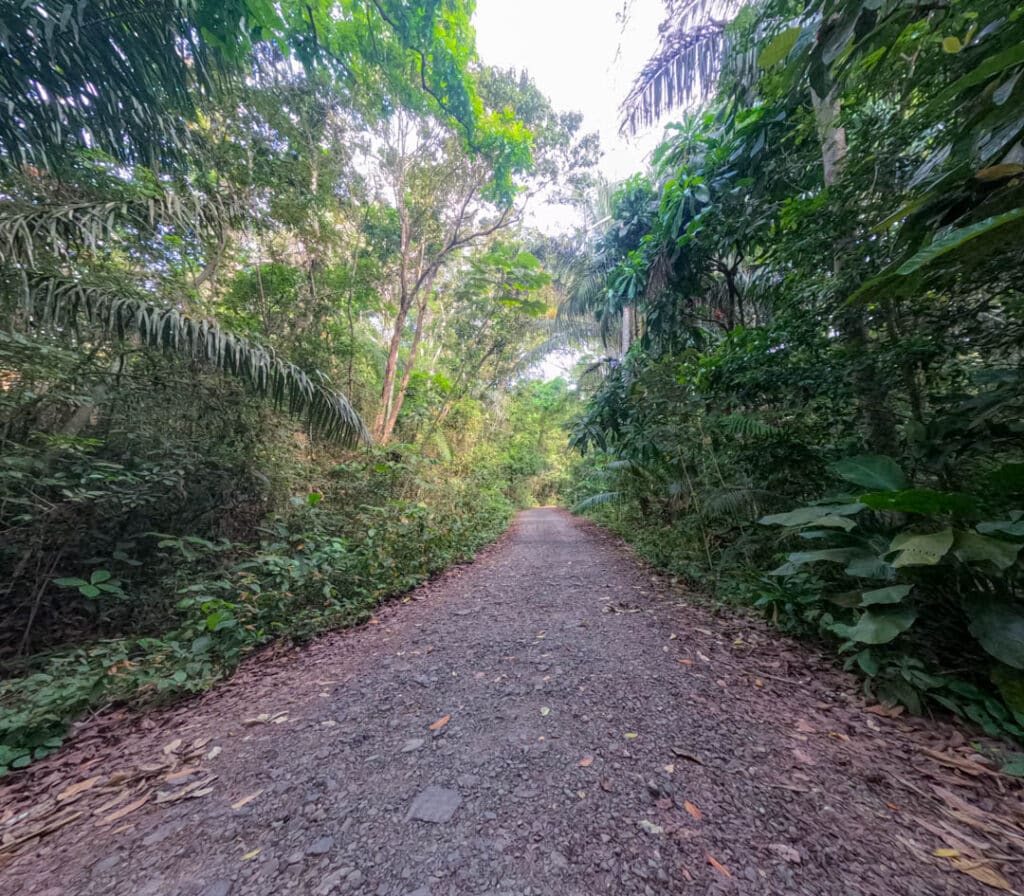
The famed Pipeline Road that follows the Panama Canal.
What is an army ant swarm?
An army ant swarm is when millions of army ants work together to hunt insects in a certain section of the rainforest. They will work together to scour every crevice in the rainforest in order to attack every and all insects in their path. They will then devour all those insects. Within the army ant swarm, it is an insect genocide. There is no escape as any insect that jumps or tries to fly away from the marauding swarm will get picked off by one of the many birds that follow these swarms.
Related: Peeing with leopards at Chobe National Park
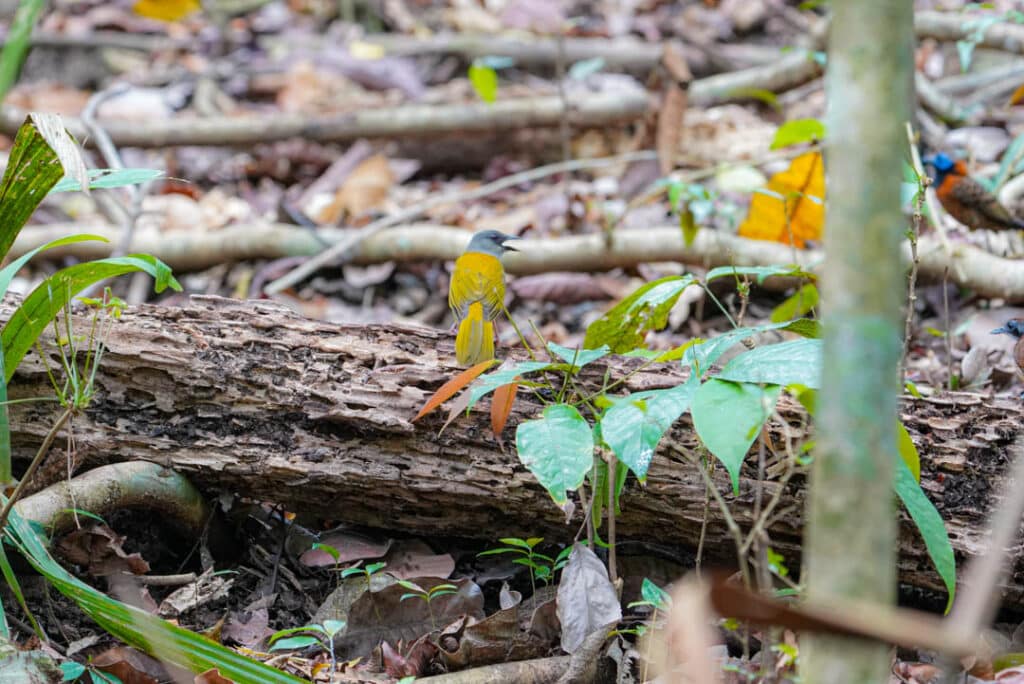
The gray-headed tanager with an ocellated antbird out of focus to the left.
Gray-headed tanagers indicate a possible army ant swarm
In order to find an army ant swarm, and the birds that follow them, one needs to pay attention to the sounds of the birds and sighting of them. If you hear or see a bird that follows the swarm, that may indicate the presence of a nearby army ant swarm. We saw two gray-headed tanagers along the road. Then we heard and saw red-throated ant-tanagers, so my guide was pretty sure there was an army ant swarm in the vicinity. He told me to wait for him along the road, and he crashed into the jungle.
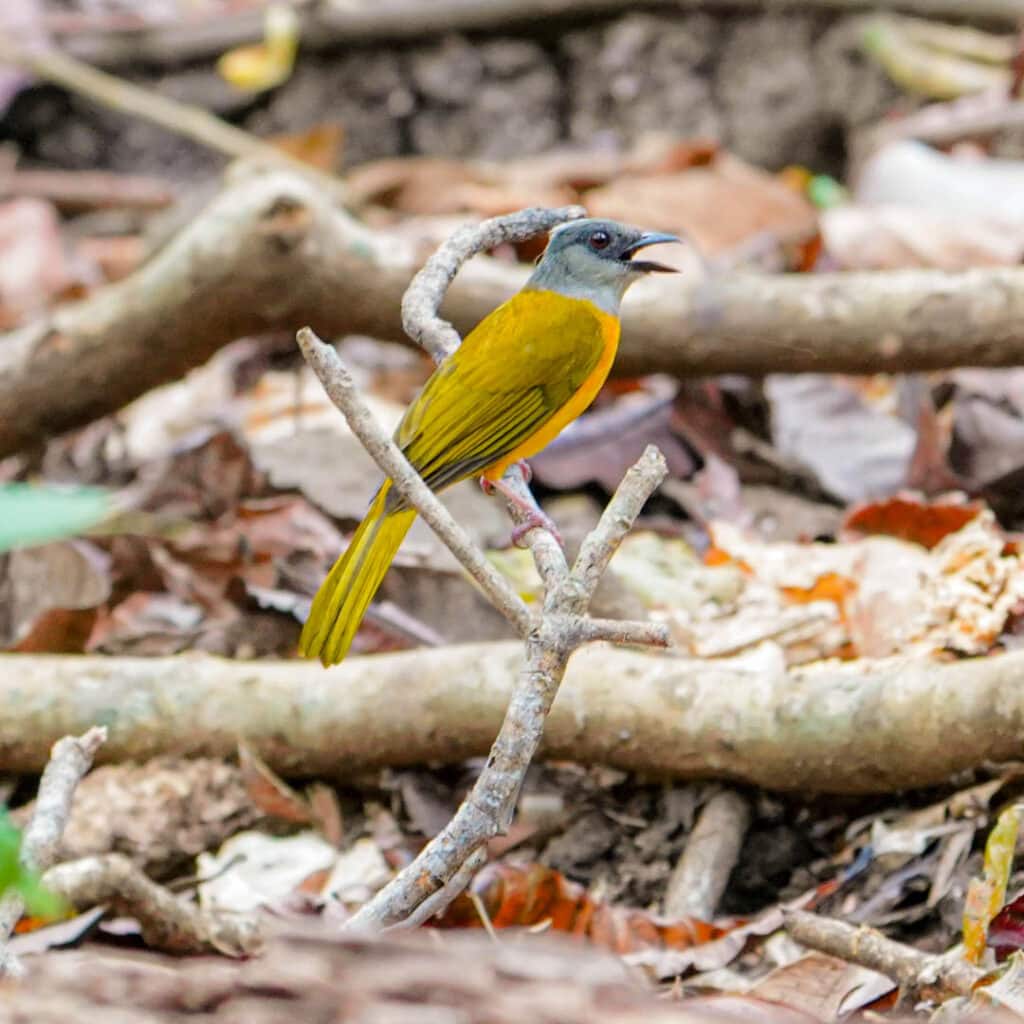
Gray-headed tanager.
A few minutes later, he told me to follow him up. I crashed into the jungle myself and in a few minutes, I had caught up with Michael. He gestured for me to come to a certain spot. He pointed to a bicolored antbird. Sure enough, a cute little antbird was sitting along the forest floor. Michael told me where to stand, and he backed away as he thought the two of us might scare away the ant swarm birds.
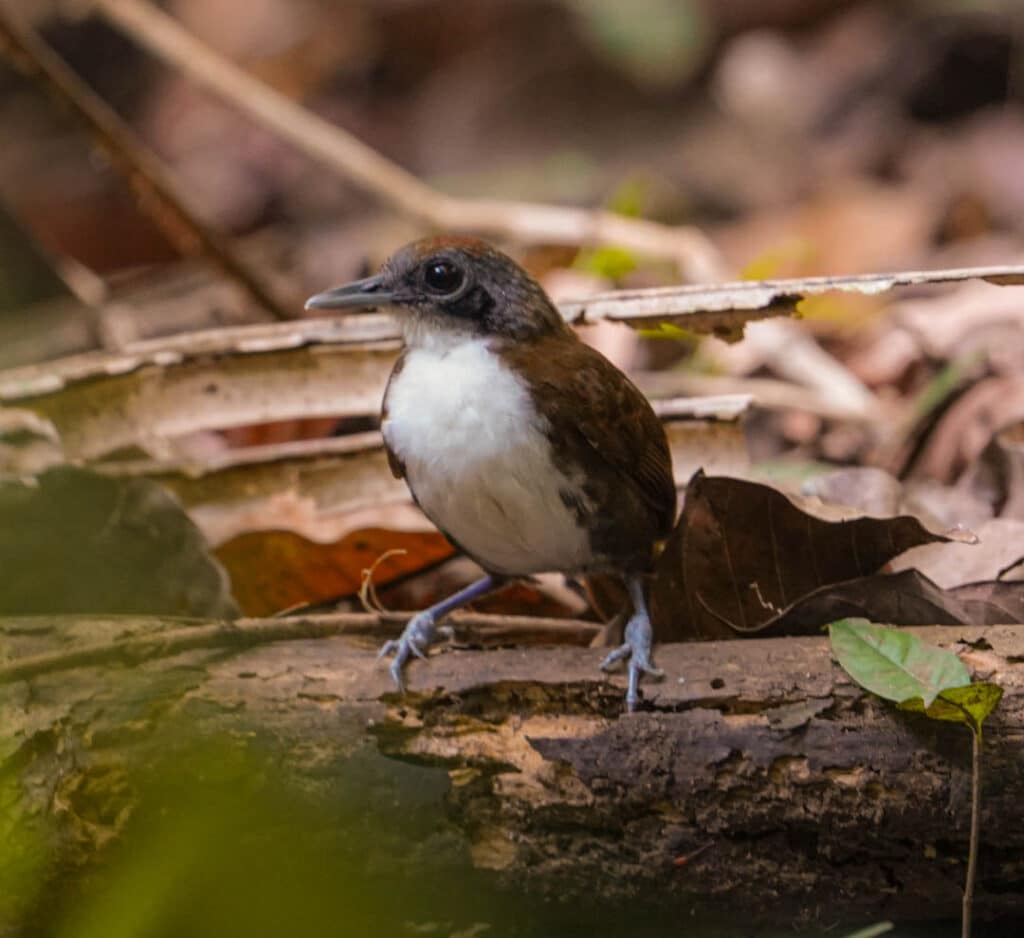
Bicolored antbird was the first bird we saw after the gray-headed tanagers
Ocellated antbirds confirm the presence of an army ant swarm
On a nearby log, an ocellated antbird appeared. This species is like the crown jewel of the army ant swarm birds. These birds that follow the swarm are shy and reclusive and spend most of their time hiding in thick undergrowth. If you are not able to see them when they are feeding from fleeing insects escaping the ants, it is pretty difficult to spot them. Behind the ocellated antbird, I could see hundreds of ants swarming around. So the gray-headed tanagers indicate that an army ant swarm could be near, and the ocellated antbird’s prescence confirms it.
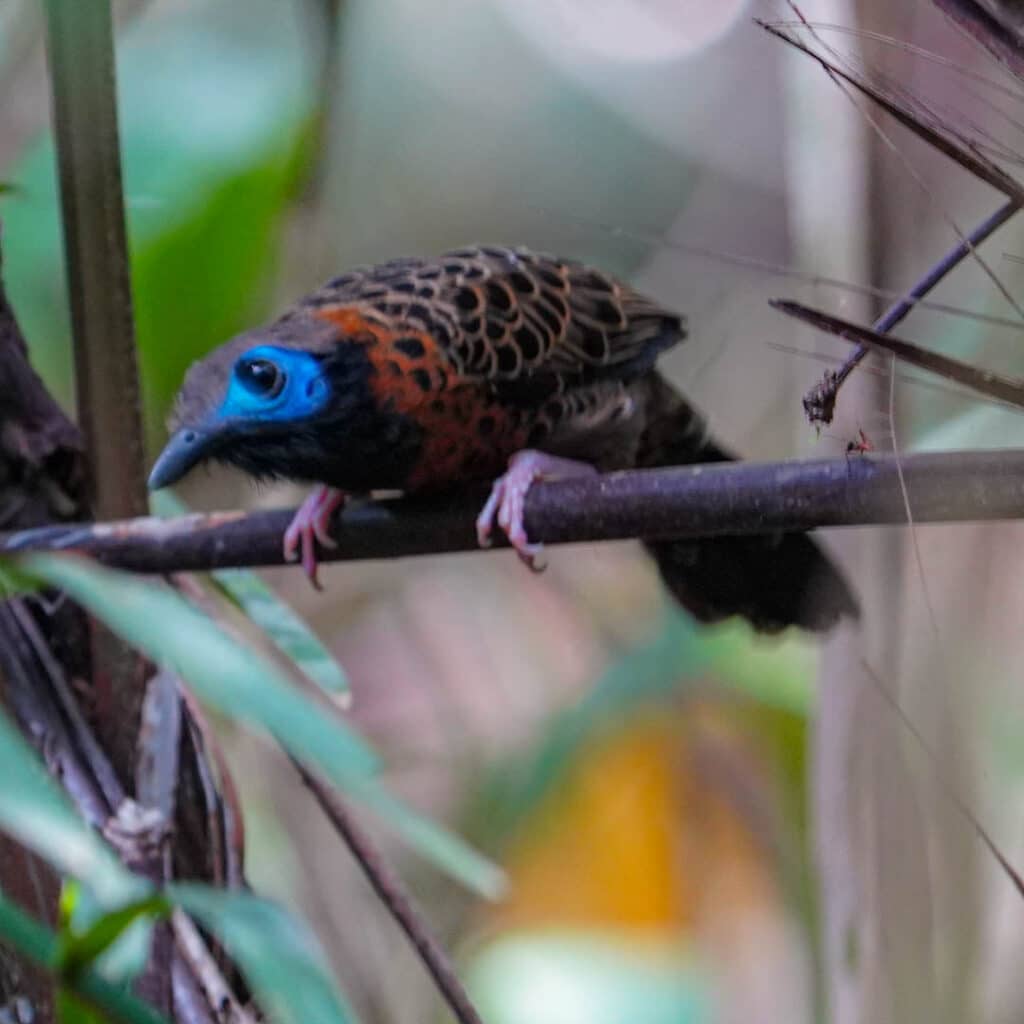
Ocellated antbirds are a fascinating bird with an intriguing appearance.
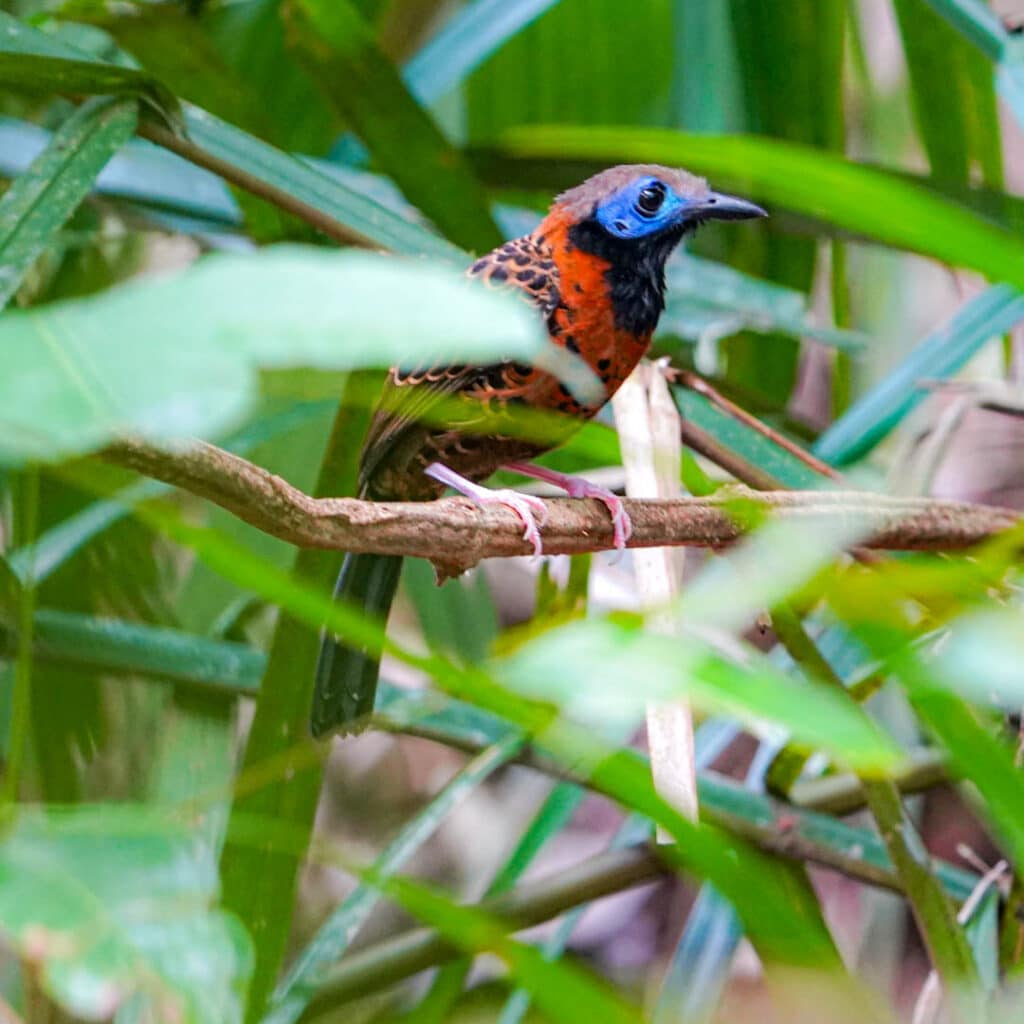
Ocellated antbird
Pretty soon other birds joined the feeding frenzy. The gray-headed tanagers appeared alongside another ocellated antbird. Then a northern barred-woodcreeper showed up. More bicolored antbirds joined the fray. It was an incredible experience, and if it would not have been for Michael, I would never have seen the army ant swarm birds. We also saw spotted antbirds, dot-winged antwrens, and a streaked-chested antpitta. Michael, from his perch down the hill, pointed out that a cinnamon woodpecker was overhead. Not only was this a lifer, but this was one of the most unique and beautiful woodpeckers I have ever seen.
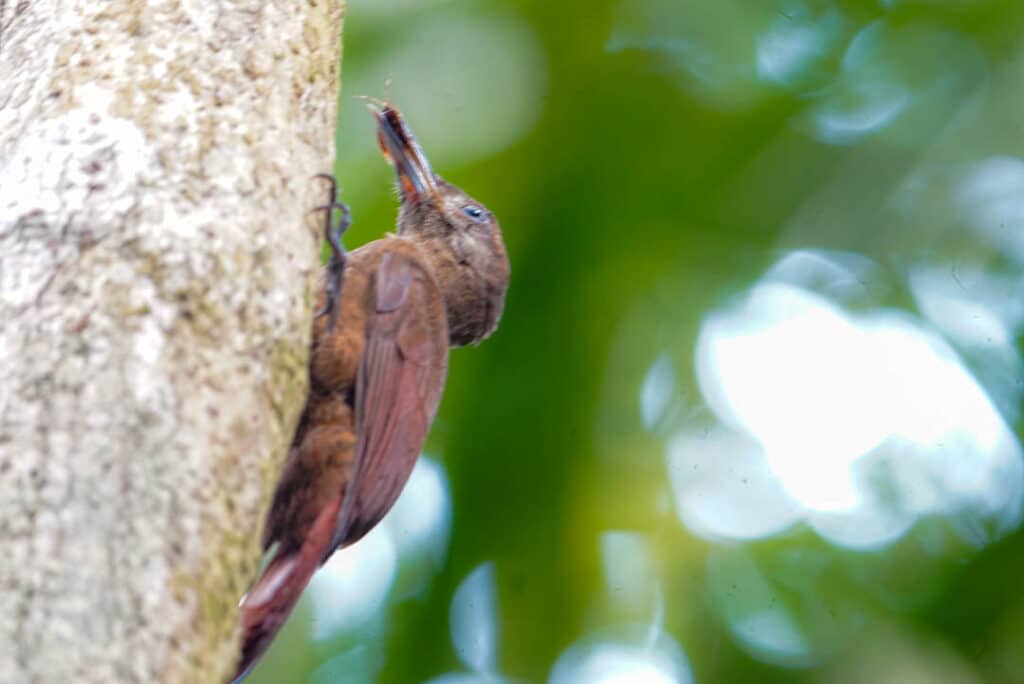
Barred woodcreeper enjoying an insect that temporarily escaped from the army ant swarm.
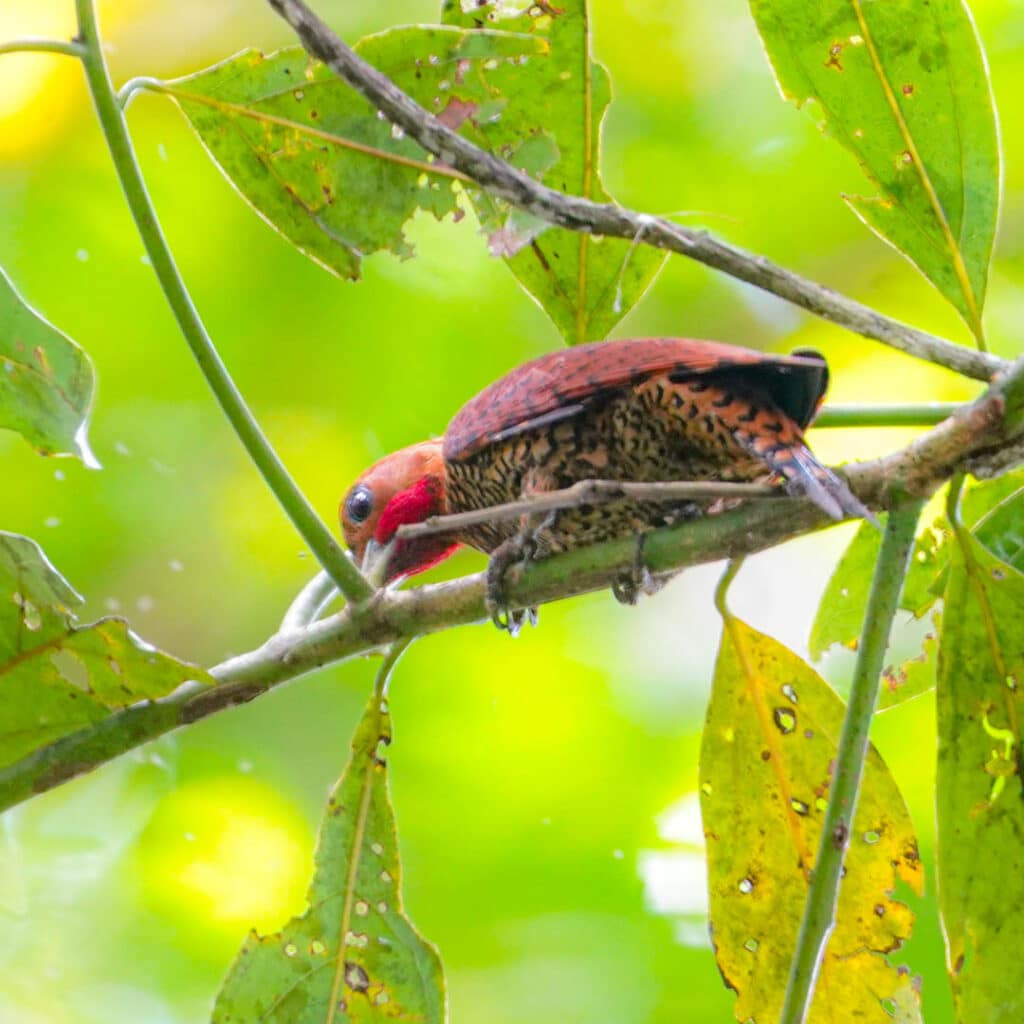
Not the best angle for the cinnamon woodpecker, but you can tell how beautiful they are.
An example of a mutualistic relationship in the rainforest biome
Just like the ox-pecker that pulls parasitic organisms off a giraffe, the army ant swarm is an example of a mutualistic relationship for the ants and the birds. It definitely is not for the poor consumed insects. Sometimes, the mutualistic relationship extends even further. When the birds start pooping, then butterflies arrive on the scene and eat the scat from the birds. Sometimes hawks will arrive on the scene and prey on the birds. The army ant swarm that I witnessed must not have been too large as these other relationships did not occur and it ended within ten minutes.
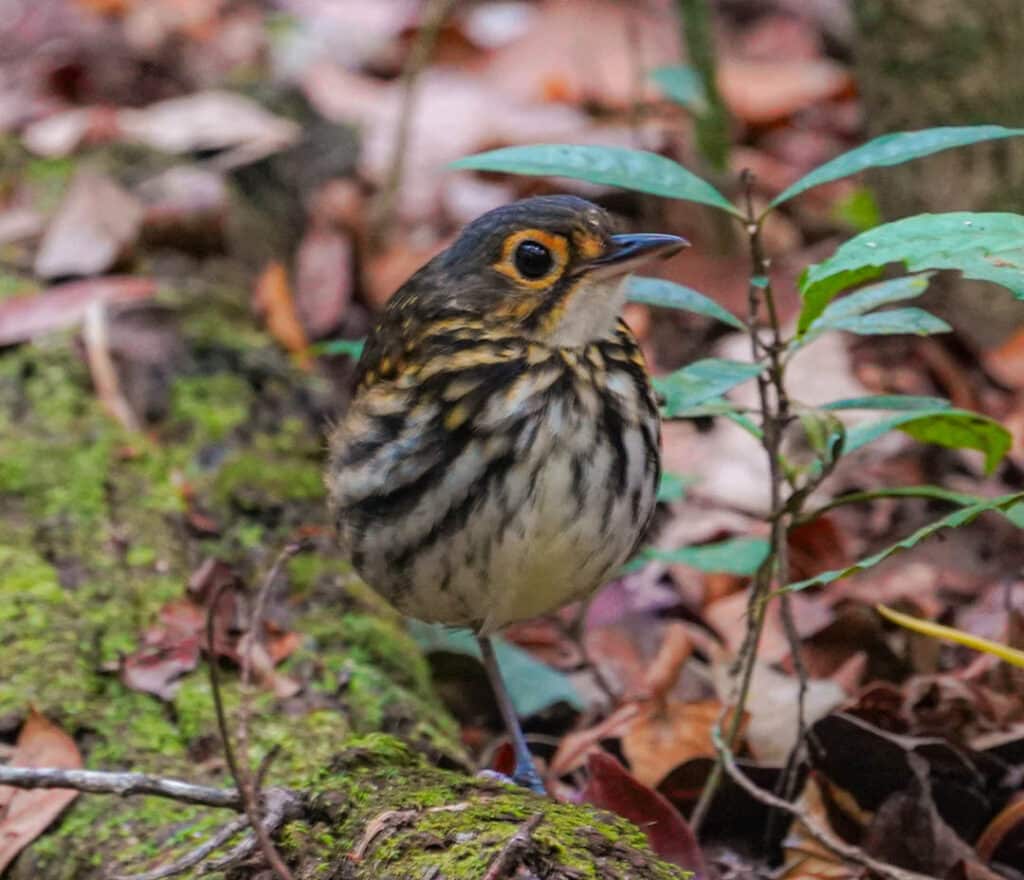
Streak-chested antpitta
Highly recommend Whitehawk Birding and birding in Panama
The army ant swarm was the highlight of the day birding with Whitehawk, but was not the only high point. We saw many other birds outside the ant swarm including keel-billed toucans, collared aracaris, motmots, puffbirds, trogons, manakins, and much more. We did not see any of the army ant swarm birds outside the actual ant swarm. This shows how important it is to have a good guide to find one, or you will probably not see these birds. Guides also will know the places along the trail the ant swarm is more likely to occur.
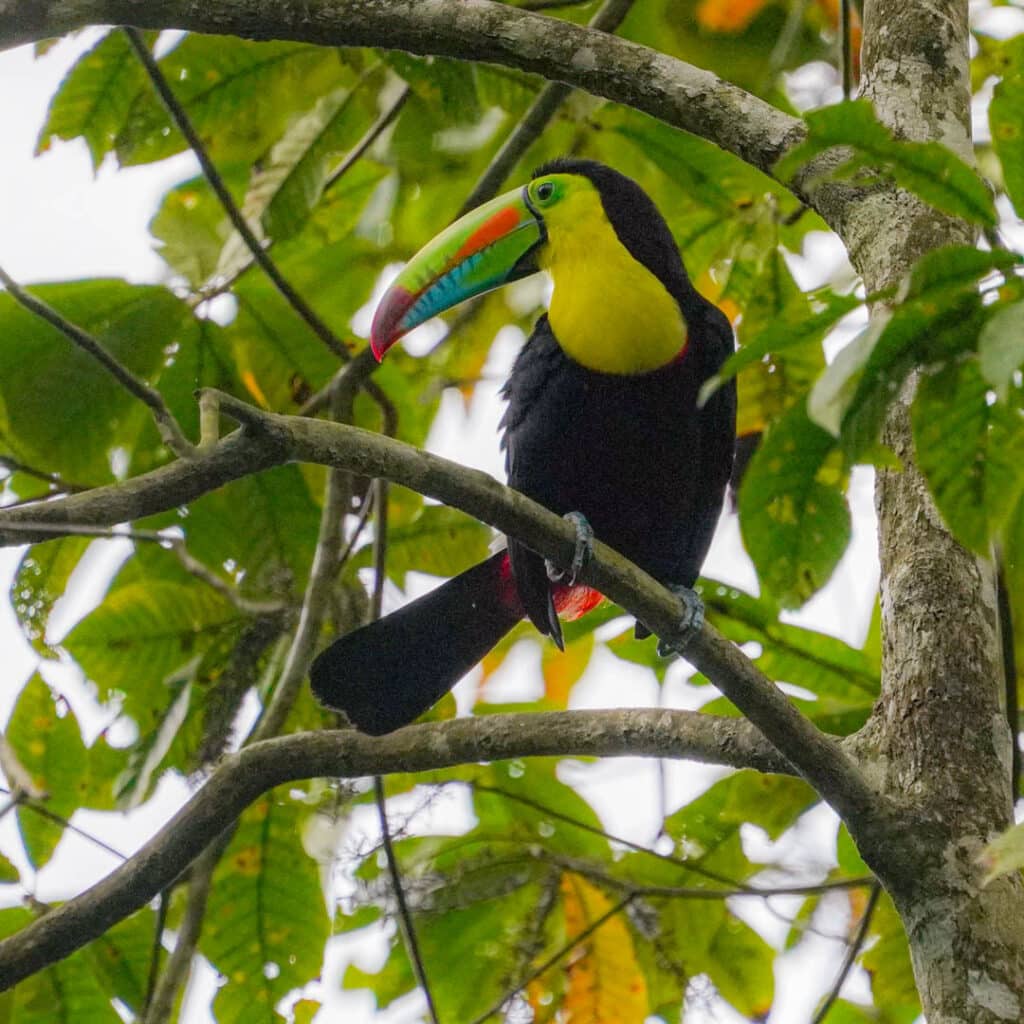
Keel-billed toucan – Pipeline Road.
I was really amazed at the quality of birding in Panama. In the past, I have birded Guatemala, Thailand, Sri Lanka, and Costa Rica, and Panama is just as amazing and perhaps better than those destinations. What I find incredible about Panama is the sheer ease of birding. There are birds everywhere. I did a downtown tour and saw a yellow-crowned night heron in a tree in one of the most touristy parts of the city. When you go to a renowned birding spot in Panama like Pipeline Road, it will be an experience you remember forever.
Adventure on!








